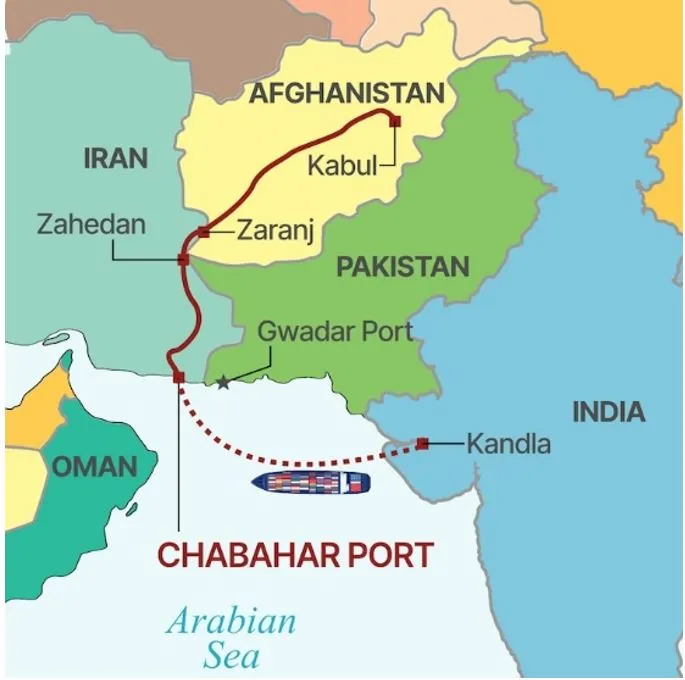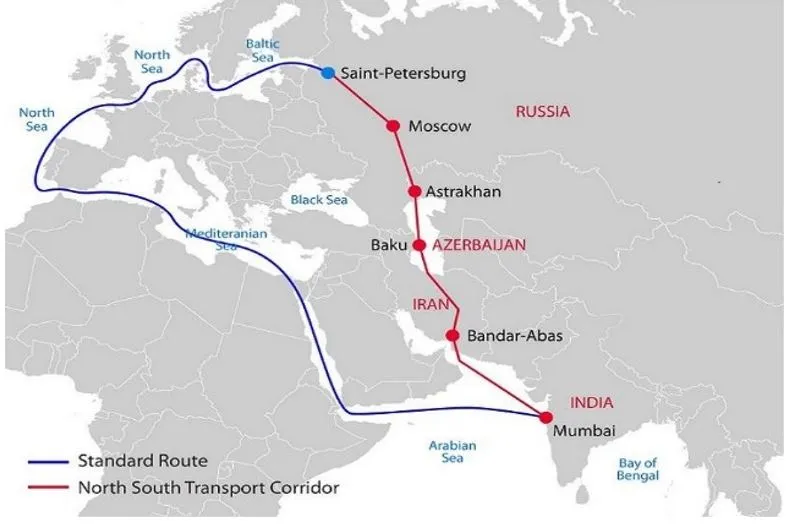

23rd October 2024 (10 Topics)
Context
Prime Minister Narendra Modi’s recent visit to Russia has drawn attention due to significant discussions on regional connectivity, particularly in his meeting with Iran’s newly elected President, Dr. Masoud Pezeshkian. The leaders emphasized the strategic importance of the Chabahar Port and the International North-South Transport Corridor (INSTC).
About Chabahar Port
- Chabahar, the deep water port is located on the Makran Coast of Iran's Sistan-Baluchistan province.
- It is next to the Gulf of Oman and at the mouth of the Strait of Hormuz, which is a vital shipping route linking the Middle East to markets in Asia, Europe, and North America.
- Moreover, Chabahar is the only Iranian port with direct access to the Indian Ocean.
- In India's context, the port is closer to Gujarat on the west coast. Even from Mumbai, it is just 768 nautical miles away.
- Moreover, Pakistan's Gwadar port, in which China has invested heavily, is just 170 km east of Chabahar.
- The China-Pakistan Economic Corridor originates from the Gwadar port.
- From Chabahar port, a road network goes up to Zaranj in Afghanistan. From there, the 218-km Zaranj-Delaram road, constructed with India's assistance, will give access to four major cities - Herat, Kandahar, Kabul and Mazar-e-Sharif.
- Significance:
- The port, once fully operational, will also give India direct access to resource-rich Central Asian countries like Turkmenistan and Kazakhstan.
- The Chabahar port allows India to cut the time to send goods to Central Asian nations by a third.
- Besides, it will also connect the International North-South Transport Corridor (INSTC) that joins India and Russia via Iran.

Fact Box: International North-South Transport Corridor (INSTC)
|
More Articles



